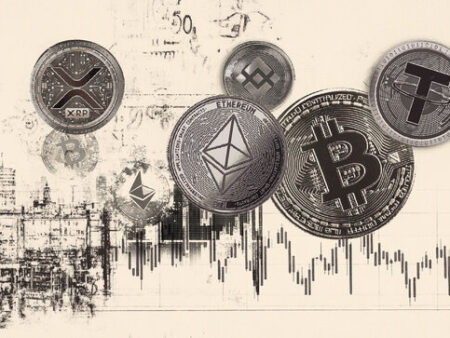Ripple’s XRP Faces Downward Pressure Amid Market Uncertainty
Ripple’s XRP is experiencing a third consecutive day of losses, its upward momentum halted at the $2.23 resistance level. Key technical indicators suggest a bearish trend, with XRP trading around $2.08 on Friday. This negative outlook mirrors a cautious sentiment across the broader cryptocurrency market, as many altcoins give back gains made earlier in the week.
Ripple Pursues Multi-Chain Interoperability with Wormhole Partnership
Ripple is collaborating with Wormhole, a leading cross-chain interoperability protocol, to enhance the integration of the XRP Ledger (XRPL) mainnet and the XRPL’s Ethereum Virtual Machine (EVM) Sidechain.
With the increasing demand for stablecoins and tokenized assets in financial markets, Ripple recognizes the urgent need for a robust blockchain infrastructure. This infrastructure will enable institutions and users to move assets securely and efficiently, mitigating the risk of liquidity fragmentation.
According to Thursday’s announcement, Wormhole, which supports over 200 applications across more than 35 blockchain ecosystems, will integrate its cross-chain infrastructure with both the XRPL mainnet and the XRPL EVM Sidechain.
This integration will empower developers to transfer supported XRPL assets, including XRP, Issued Assets (IOUs), and Multi-Purpose Tokens (MPTs), across supported protocols. Developers will also gain the ability to communicate with smart contracts across blockchains using specialized messaging and data triggers.
David Schwartz, CTO of Ripple, stated, “For true mass adoption, interoperability is essential. The infrastructure must exist not just on one chain, but across all. This integration prepares tokens natively issued on the XRP Ledger for that reality by enabling them to move between blockchain networks while maintaining native issuance and control.”
Technical Outlook: Bearish Bias Persists for XRP
XRP has extended its downward trend below the $2.09 support level, indicating vulnerability to further pressure before the weekend. A sell signal, maintained by the Moving Average Convergence Divergence (MACD) indicator since Thursday, suggests increasing bearish momentum as traders consider reducing their XRP exposure.
Red histogram bars below the MACD’s zero line reinforce the bearish control, particularly with XRP extending losses below the 50-period Exponential Moving Average (EMA) at $2.13, the 100-period EMA at $2.15, and the 200-period EMA at $2.18 on the 4-hour chart.
The path of least resistance appears to be downward, increasing the likelihood of XRP’s price slipping below the $2.00 support level, especially if the Relative Strength Index (RSI) continues to decline, approaching oversold territory.
Key areas to watch include $1.90, which was tested on Sunday, $1.80, and $1.61, last examined in April following a tariff-induced sell-off.
However, an immediate rebound above the highlighted support on the chart cannot be ruled out. This could build risk-on sentiment if XRP futures Open Interest (OI) continues its current upward trend at $4 billion.
Cryptocurrency Metrics FAQs
The developer or creator of each cryptocurrency determines the total number of tokens that can be minted or issued. Only a specific number of these assets can be minted through mining, staking, or other mechanisms. This is defined by the underlying blockchain technology’s algorithm. Since its creation, a total of 19,445,656 BTC have been minted, which is Bitcoin’s circulating supply. On the other hand, the circulating supply can also decrease through actions such as token burning or accidentally sending assets to addresses on other, incompatible blockchains.
Market capitalization is calculated by multiplying the circulating supply of a specific asset by its current market value. In the case of Bitcoin, the market capitalization in early August 2023 exceeds $570 billion, which is the result of the over 19 million BTC in circulation multiplied by Bitcoin’s price, which is around $29,600.
Trading volume refers to the total number of tokens of a specific asset that have been traded or exchanged between buyers and sellers within a set trading timeframe, for example, 24 hours. Used to gauge market sentiment, this metric combines all volumes from centralized and decentralized exchanges. An increase in trading volume often signifies demand for a particular asset, as more people are buying and selling the cryptocurrency.
The funding rate is a mechanism designed to encourage traders to take positions and ensure that perpetual contract prices align with those in spot markets. It defines an exchange mechanism to ensure that future prices and periodic price payments converge regularly. When the funding rate is positive, the perpetual contract price is higher than the market price. This means that traders who are bullish and have opened long positions pay traders who are in short positions. Conversely, a negative funding rate means that perpetual contract prices are lower than the reference price, so traders with short positions pay traders who have opened long positions.
Stay ahead of the curve in the fast-paced crypto world – explore the latest updates and trends at Cryptonewsfeeds.com.










